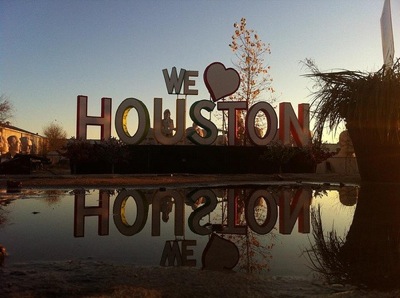
- Delays for Killen’s Heights Steakhouse, Pearland BBQ Restaurant [29-95.com]
- Bikeshare Stations Now Open at Downtown YMCA, Ensemble/HCC Light Rail Stop; Many More To Come [The Highwayman]
- Missouri City Residents’ Input Wanted For Bicycle, Pedestrian Mobility Plan [Sugar Land Sun]
- League City Swaps Oak Tree for Sailboats in New Logo [Galveston County Daily News ($)]
- Stringfellow Orchards in Hitchcock Added to National Register of Historical Places [Galveston County Daily News ($)]
- Dry Fall Might Mean Fewer Bluebonnets [Click2Houston]
- Does Light Rail Really Encourage People to Stop Driving? [Atlantic Cities]
Photo near SculpturWorx Studio: Alex Luster via Swamplot Flickr Pool





Love reading about Houston light rail when it is compared to English light rail
Finally planners know what engineers have known all along, rail doesn’t reduce traffic. In this case it was Light Rail, but it also applies to all passenger rail.
Well, maybe if the public transit were more interconnected and close to where people live AND need to get to. I’ve lived places where just about everyone takes a train or a bus & it’s because it’s convenient.
@kjb434 — the results of those studies are a bit more complex and confirmed what planners knew all along: if there is a reduction in cars resulting in extra capacity, that capcity will automatically (and nearly immediately) be filled by people who otherwise drove less or at different times. This is why building new roads to reduce congestion doesn’t work. You could build elevated roads along every major thoroughfare in Houston, and they’d be filled to capacity by the time Fred the Baker could finish frosting the donuts.
The point of rail transit is not to reduce traffic. The point of rail transit is to give people the option of avoiding traffic.
I’ve said this dozens of times in various blogs and forums the past ten years; might as well cram two into one post.
The point of rail transit is not to reduce traffic. The point of rail transit is to give people the option of avoiding traffic.
I think the caveat in the last paragraph of the Atlantic Cities article. The study was based on the presence of light rail. I did not take into account how well or poorly that light rail served its city.
.
Houston’s proposed and existing light rail exclude many neighborhoods where rail could have a tremendous effect on automobile traffic, but also improve the quality of life for a great number of people. Houston’s densest residential neighborhood – Gulfton – the very place where it would benefit the most people – is not slated to get rail.
.
More than that, one could question what benefit light rail would have over a re-vamped bus system. Most of Houston’s neighborhoods suffer not from a lack of transit, but from the fact that bus lines don’t go where people need to go, or take forever to get there. Fixing this might take more cars off the road than light rail would.
Mike – our toy train stops for red lights and sits in traffic.
I use light rail semi-often. I walk down to the one on main street — by tacos a go-go. Not only is it close, but there are cool places to wait for the train (and maybe grab a drink). It’ll take me downtown so I can avoid parking. It’ll take me to the Rodeo (so I can avoid a DUI). If they end up running it down Richmond, it’ll take me to the Galleria so I can go there without wanting to kill myself (seriously, how do people drive in that traffic daily and not ram their car into a wall?)
Great to hear that you ride the light rail line, Cody. and you’re not alone. From what I remember of a presentation Christof Spieler gave, METRO light rail has some of the best ridership numbers in the country.
But still, My question for the Board of Directors at METRO (and for others close to the decision making) is: why shouldn’t the 45,000 people who live in Gulfton, have the same access to light rail as the 9,0000 or so people who live in Midtown? Is it really fair? Is it really well suited to our City’s needs?